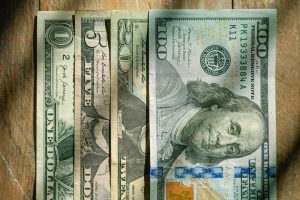Forex trading, also known as foreign exchange trading or currency trading, is a global market where currencies are bought and sold. Traders buy one currency and sell another at the same time, with the goal of making a profit from the difference in exchange rates.
Forex trading is the largest financial market in the world, with an average daily trading volume of over $5 trillion. It operates 24 hours a day, five days a week, across all time zones, making it accessible to traders all over the world.
How does Forex trading work?
Forex trading involves buying and selling currencies in pairs. Each currency pair is quoted in two prices, the bid price and the ask price. The bid price is the price at which the market is willing to buy the base currency, while the ask price is the price at which the market is willing to sell the base currency.
For example, if the EUR/USD currency pair is quoted at 1.1200/1.1205, the bid price is 1.1200, and the ask price is 1.1205. This means that if you want to buy the euro, you would pay 1.1205 dollars for one euro. If you want to sell the euro, you would receive 1.1200 dollars for one euro.
Traders can buy or sell currencies through a broker or trading platform. A trading platform is a software that allows traders to access the Forex market and execute trades. Brokers act as intermediaries between traders and the market, providing access to liquidity and offering trading tools and resources.
To start trading Forex, traders need to open a trading account with a broker and deposit funds. They can then use the trading platform to place trades and manage their positions.
Types of Forex trades
There are several types of Forex trades that traders can use to take advantage of market opportunities and manage their risk:
1. Spot trades: The most common type of Forex trade, spot trades involve buying or selling a currency pair at the current market price.
2. Forward trades: Forward trades involve buying or selling a currency pair at a predetermined price and date in the future. Forward contracts are used by traders to hedge against currency risk.
3. Futures trades: Futures trades involve buying or selling a currency pair at a predetermined price and date in the future. Futures contracts are traded on exchanges and are standardized.
4. Options trades: Options trades give traders the right, but not the obligation, to buy or sell a currency pair at a predetermined price and date in the future. Options are used by traders to hedge against currency risk or to speculate on market movements.
Forex trading strategies
Forex traders use a variety of strategies to make trading decisions and manage their risk. Some of the most common Forex trading strategies include:
1. Technical analysis: Technical analysis involves analyzing price charts and using technical indicators to identify patterns and trends in the market. Traders use this information to make trading decisions and manage their positions.
2. Fundamental analysis: Fundamental analysis involves analyzing economic data, news events, and other macroeconomic factors that can affect currency prices. Traders use this information to make trading decisions and manage their positions.
3. News trading: News trading involves trading based on the release of important economic data and news events. Traders use this information to take advantage of market volatility and make profits.
4. Scalping: Scalping involves making multiple trades in a short period of time to take advantage of small price movements. Traders use this strategy to make small profits on each trade.
Risks of Forex trading
Forex trading involves a high degree of risk and is not suitable for all investors. Traders can lose all or part of their investment, and there is no guarantee of profits.
Some of the risks associated with Forex trading include:
1. Market risk: Forex prices are highly volatile and can fluctuate rapidly, making it difficult to predict market movements.
2. Leverage risk: Forex trading involves using leverage, which can amplify gains and losses. Traders need to manage their leverage carefully to avoid large losses.
3. Counterparty risk: Forex trading involves trading with other market participants, and there is a risk that the counterparty may default on their obligations.
4. Regulatory risk: Forex trading is subject to regulation in different countries, and traders need to be aware of the regulatory requirements and restrictions in their jurisdiction.
Conclusion
Forex trading is a global market where currencies are bought and sold. Traders buy one currency and sell another at the same time, with the goal of making a profit from the difference in exchange rates. Forex trading involves a high degree of risk and is not suitable for all investors. Traders need to manage their risk carefully and use appropriate trading strategies to maximize their profits.






